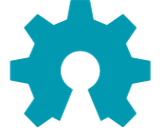We contribute to, benefit from, and are committed to the collaborative spirit of the open source ecosystem. In general, we believe in:
- Leveraging and supporting open source software whenever feasible
- Adherence to and development of open standards whenever possible
- An open, collaborative and transparent development process
Ximira's Open Source Contributions


In support of our mission to accelerate the development of assistive devices for the blind community, Ximira will make much of our core system available as open source. It will be freely available for use, redistribution, modification, and incorporation into alternative or enhanced systems. Minimally, the following will be developed and shared openly and released under copyleft or permissive licenses as appropriate to maximize adoption and contribution:
- Software
- Core controller system
- Most "offline" services including our core indoor and outdoor mobility assistance
- Device (camera/haptics/wireless) interface modules
- Haptic control software
- Phone/Tablet configuration & management interface
- Data sets and trained computer vision models to support mobility assistance
- Standards/Interfaces/Protocols
- Standards for all inter-process/-device communication messages
- Templates and examples for adding additional capabilities and services
- Templates and examples for integrating additional sensors, devices and user interface paradigms
- Hardware
- Specifications for all PHINIX hardware and peripheral devices
- Schematics and wiring diagrams for all PHINIX hardware and peripheral devices
Repositories and Guidelines for Contribution
Please have patience as we migrate existing prototype code into our new runtime architecture. We will make our repositories publicly available via GitHub as soon as possible.
Additional Motivations
Though not our primary motivation, a target outcome driving our decisions on what on how to release PHINIX components is enabling a technical user to self-source and self-assemble parts and to leverage our software and standards to create a highly-functional system at no additional cost. A more likely and desirable scenario is to enable like-minded organizations in countries outside of our target markets to adapt and incorporate our efforts into solutions tailored to meet the needs of their users.
Likewise, talented and passionate teams are working to develop assistive and adaptive technology for the blind community. Unfortunately, as we work separately, solutions are not interconnected, increasing cost and limiting ease of use. Open source is an invitation for pioneers to work together, and together we can create a more unified, universal framework for visual assistance systems.
Open Source Frameworks and Tools
Below is a partial list of open-source frameworks and tools used in the development of PHINIX:
- Ubuntu Linux (GNU GPL)
- OpenCV (Apache)
- OpenVINO (Apache)
- Depth AI (MIT)
- ROS 2 (BSD)
- Python 3 (PSF)
- CircuitPython (MIT)
- .Net Framework (MIT)
- Svelte (MIT)